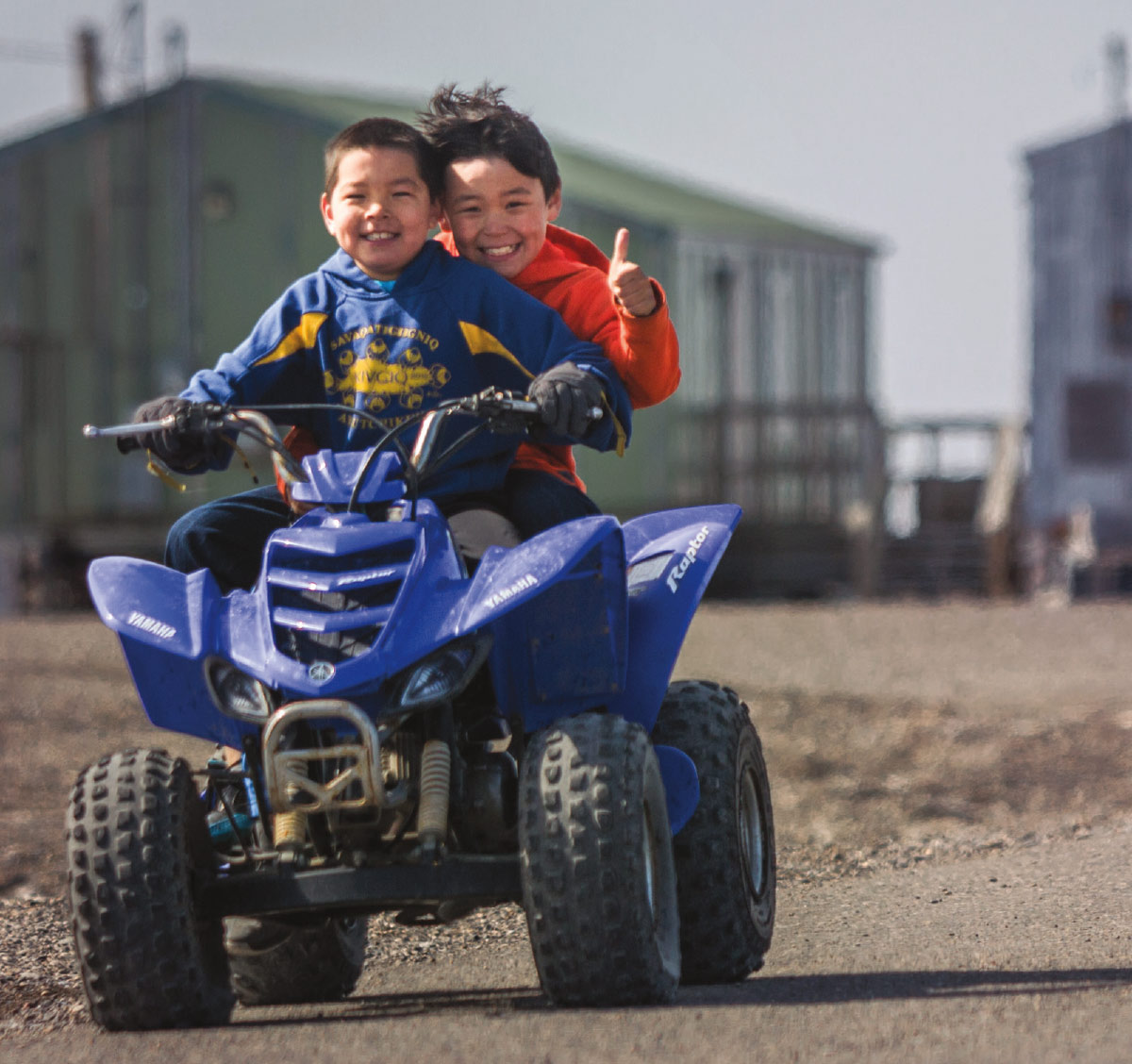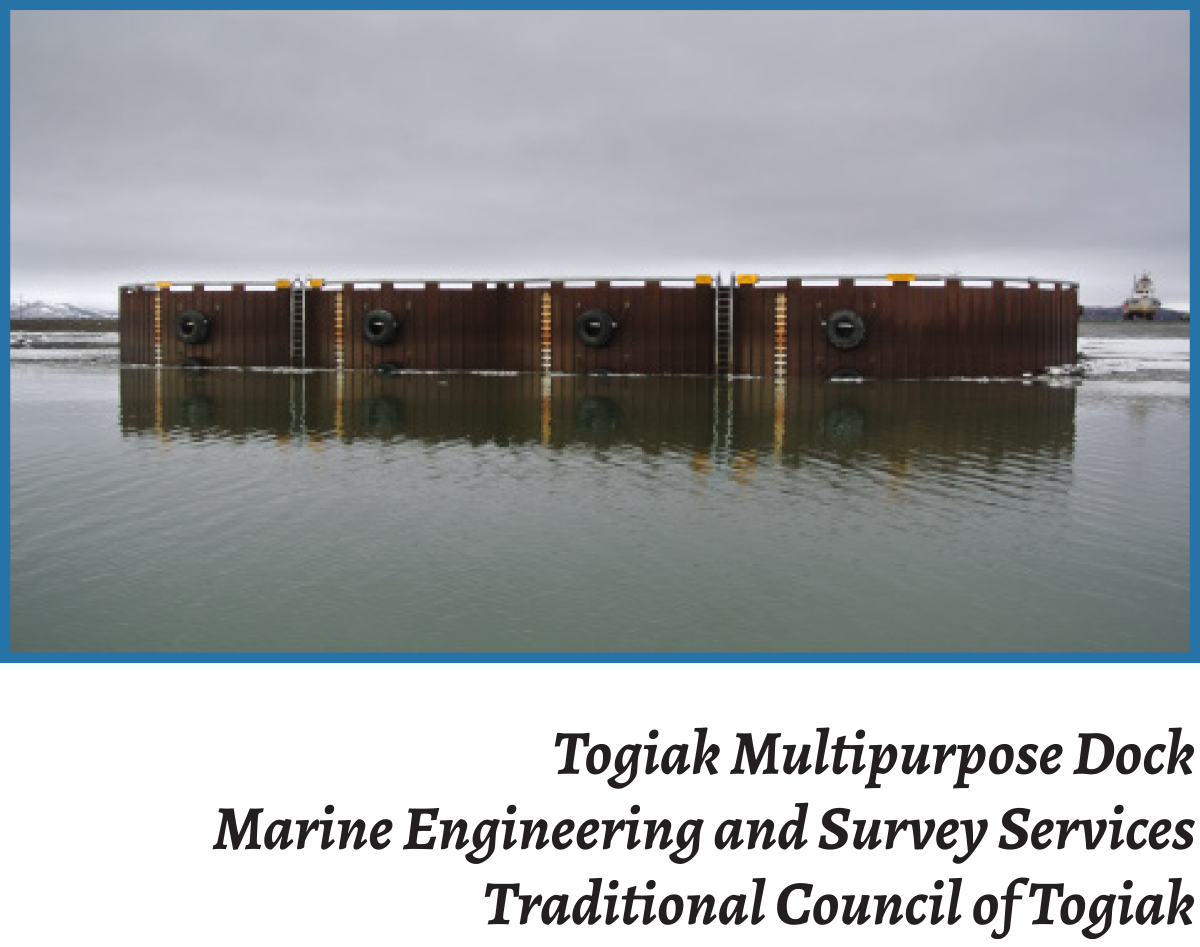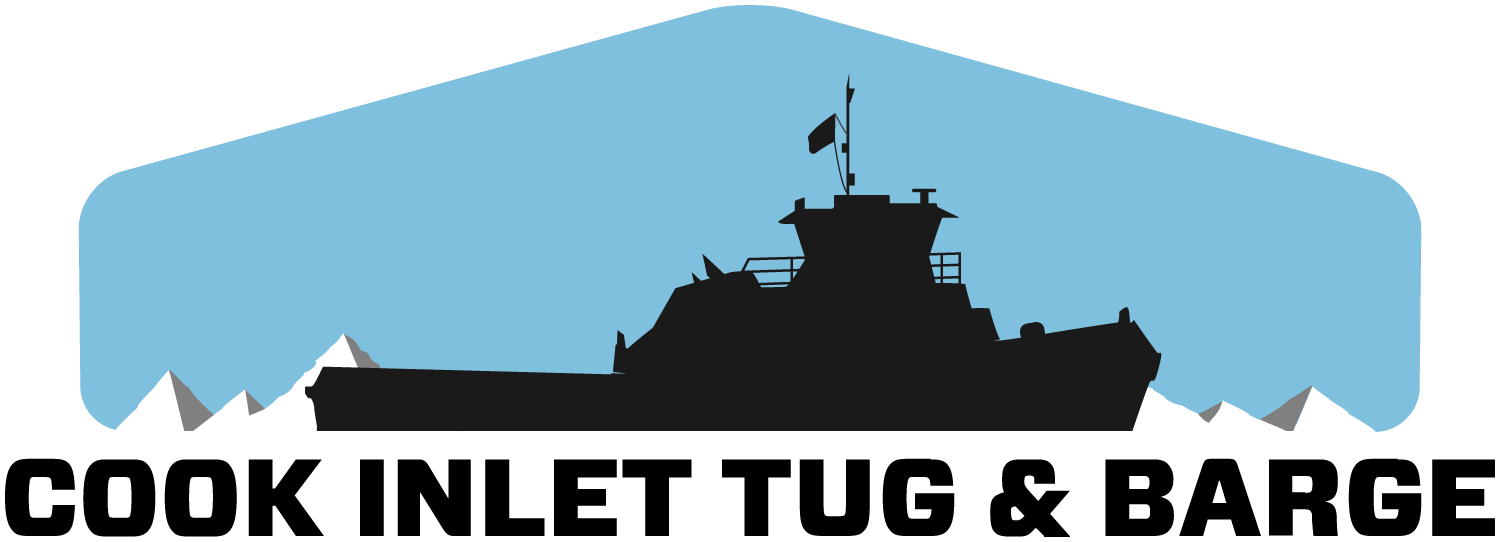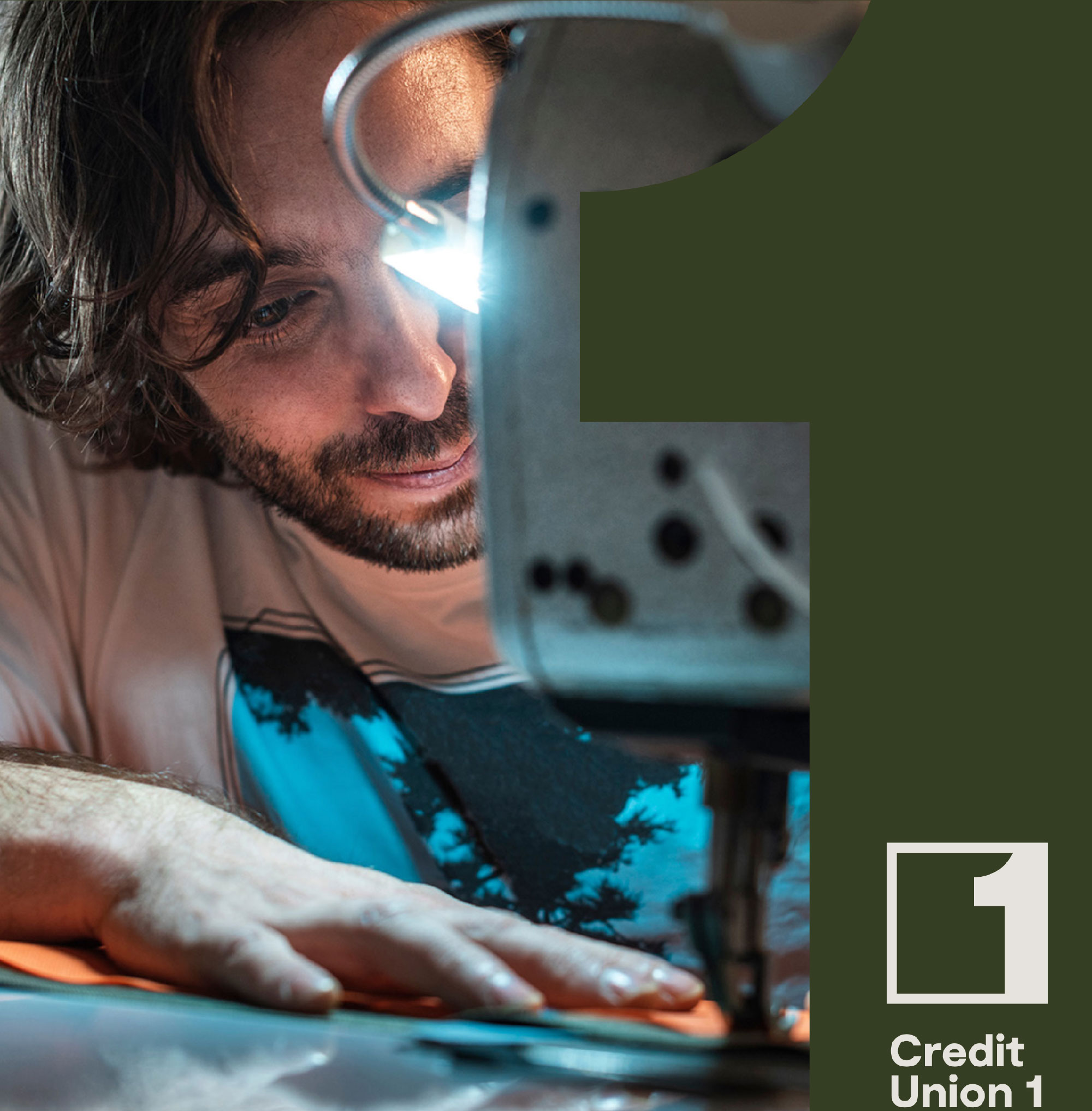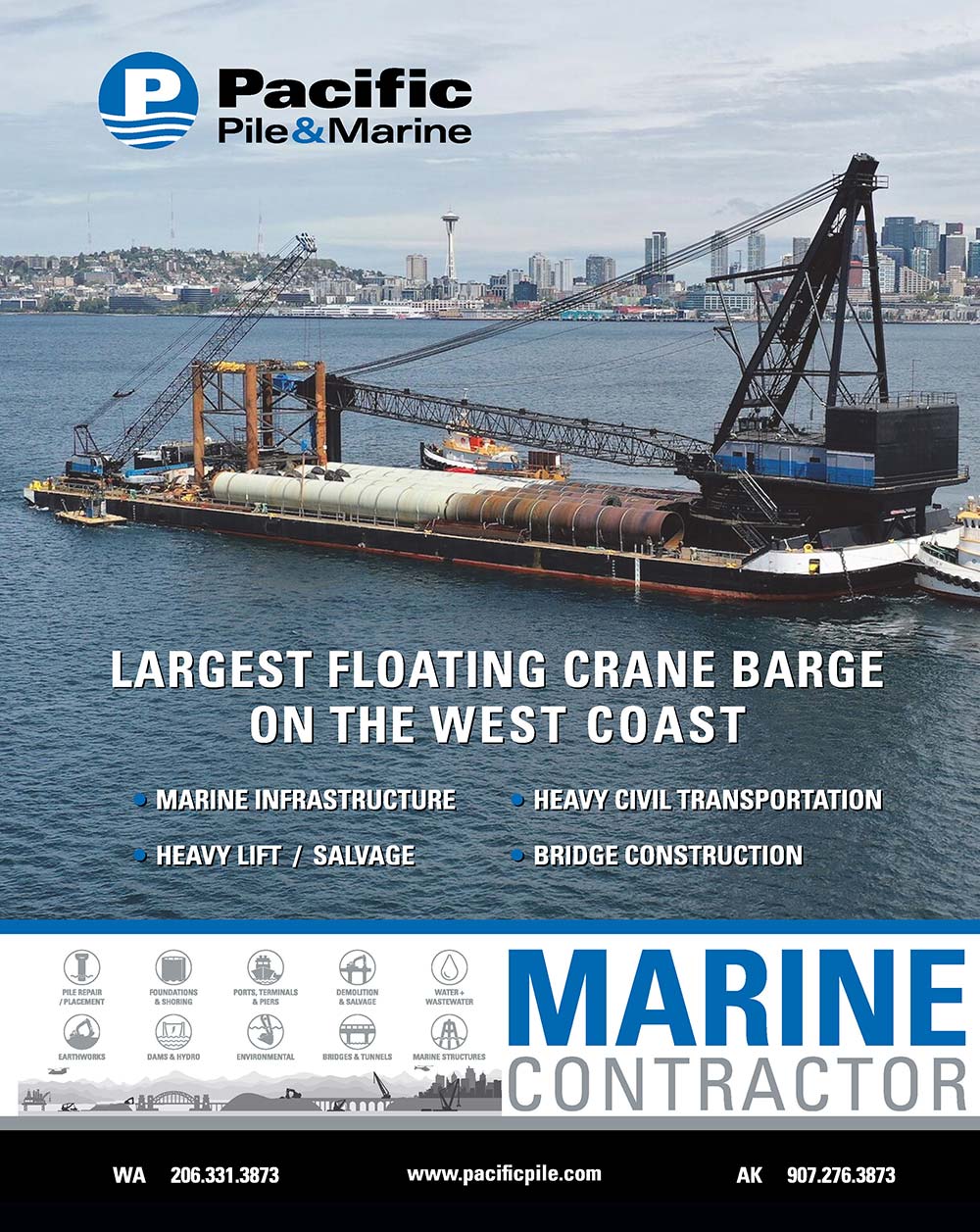Contents
Features
By Brad Joyal
By Rachael Kvapil
By Vanessa Orr
By Alexandra Kay
By Alexandra Kay
By Brad Joyal
By Rachael Kvapil
By Vanessa Orr
Quick Reads
Construction is a reliable business for Alaska Native corporations
Construction is a reliable business for Alaska Native corporations
About The Cover
According to Calista President and CEO Andrew Guy, who is the subject of our cover this month, the corporation and its shareholders have “always been family oriented” and shareholders didn’t want to “leave such a big part of our families out of Calista.”
As Guy tells it, the corporation’s shareholders center him in his position: they give him purpose, drive him to work hard, and are also what he enjoys most about his job. The value of others was instilled in him at a young age. He recalls, “When I was a kid growing up, the directive we were given by our parents and elders was to go out and get a Western education on top of our traditional education so that we could bring that knowledge back to help our families and our people.”
From the Editor

Kerry Tasker
Billie Martin
press@akbizmag.com
Postmaster:
Send address changes to
Alaska Business
501 W. Northern Lights Blvd. #100
Anchorage, AK 99503
he news became official on the last Friday of June 2019. The college hockey landscape would never be the same, and the UAA and UAF hockey programs were caught in the crossfire. Officials from both universities were surprised—stunned, really—to learn that seven of the ten schools they partnered with as members of the Western Collegiate Hockey Association were leaving the WCHA with hopes of creating their own conference without UAA, UAF, and the University of Alabama in Huntsville, the third WCHA men’s hockey team that was left behind.
We live it.
Spotting trends and navigating turbulent waters can’t happen from behind a desk. The insights come when we put on our hard hats and meet our clients where they are.
We live it.
Spotting trends and navigating turbulent waters can’t happen from behind a desk. The insights come when we put on our hard hats and meet our clients where they are.

420 L Street, Suite 400
Anchorage, AK 99501
(907) 339-7125
420 L Street, Suite 400
Anchorage, AK 99501
(907) 339-7125
COMMUNITY
MATTERS.
Our community’s greatest resource is our people.
With a mission to unleash the full potential of every neighbor, United Way of Anchorage unites caring people to give, volunteer, and take action to remove barriers to opportunity and help local families access the building blocks of well-being – education, financial stability, and health.
How can you help?
Be a part of United Way’s Community Campaign.
When families are strong, our whole community is stronger and more vibrant.
Connect with us today to get started, 907.263.3800.
John Sims, President
ENSTAR Natural Gas Company
United Way Community Campaign Chair
hether it’s a baby shower or the Super Bowl, it’s still an event. All events may be different, but what do they have in common? And how can you be sure you have your bases covered?
First things first: if you think because you have planned one event you’ve planned them all, you are sadly in for a rude awakening. At Toast of the Town we have been producing events for a combined forty-plus years, and our experience is that no two are alike. Each has its own distinct identity, look, and feel, which is what makes them something to remember. Your event’s identity is important to understand and have fully fleshed out at the beginning of your planning process. Nailing down what the highest value of your event is and who that value targets as attendees is essential.
s a growing company with locations across a wide geographical area, Alaska Rubber Group (ARG) thrives on employing top-of-the-line technology. The Anchorage-based business has made a huge, successful push with digital transformation over the past few years. Having a solid and secure IT infrastructure allows ARG to give customers access to services when, where, and how they need them. It also enables the company’s remote employees to connect and communicate consistently across teams scattered throughout Alaska, Washington, and Oregon.
The consultants in USI’s Anchorage & Sitka offices deliver custom commercial insurance brokerage solutions to address the unique challenges Alaska-based businesses face, so you can plan for tomorrow.
Call Anchorage: 907.272.0114 Sitka: 907.747.8625 or visit usi.com
Programs | Personal Risk | Retirement Consulting
© 2022 USI Insurance Services. All rights reserved.
Alaska businesses that want to grow their employees look to UAF.
Undergraduate Patty McCall works with Fisheries Professor Trent Sutton, right, and master’s candidate Nick Smith collecting live samples from the Chena River for their research on the life dynamics of Arctic brook lampreys.
New online degrees in Fisheries and Social Work
Support professional growth and improve employee retention by offering educational opportunities. UAF eCampus has 52 flexible and fully online programs. Contact us about a 10% partner discount.
UA is an AA/EO Employer and educational institution and prohibits illegal discrimination against any individual: www.alaska.edu/nondiscrimination.
Alaska businesses that want to grow their employees look to UAF.
Undergraduate Patty McCall works with Fisheries Professor Trent Sutton, right, and master’s candidate Nick Smith collecting live samples from the Chena River for their research on the life dynamics of Arctic brook lampreys.
New online degrees in Fisheries and Social Work
Support professional growth and improve employee retention by offering educational opportunities. UAF eCampus has 52 flexible and fully online programs. Contact us about a 10% partner discount.
UA is an AA/EO Employer and educational institution and prohibits illegal discrimination against any individual: www.alaska.edu/nondiscrimination.

Resolve Marine Alaska
Resolve Marine Alaska
omer has its halibut, the Kenai its kings, Bristol Bay is famous for its sockeye, and Southeast harvests herring. Far from Alaska’s 6,640 miles of coastline, though, anglers find plenty of opportunities for sport fishing. The Alaska Department of Fish & Game (ADF&G) counts an average of nearly 102,000 resident angler days each year in the Arctic/Yukon/Kuskokwim region, plus more than 44,000 non-resident angler days. And they’re not snagging salmon—at least, they have plenty of other options. Region III, which encompasses about 80 percent of the state, is home to thirty-seven freshwater and brackish water fish species, of which several are targeted as sport fish.
Our Strength.
Our Strength.

Our Strength.
he Alaska Native Claims Settlement Act (ANCSA) was signed late in 1971 and paved the way for Alaska Native regional, village, and urban corporations to organize. While 2021 saw the 50th anniversary of the act itself, many of the corporations that were the result of the legislation date their creation anywhere from 1972 to 1974—and a few even later, as some early corporations merged to better meet the needs of their shareholders.
Considering the time and energy devoted to crafting the landmark act, it’s fitting to celebrate it and the corporations for more than one year.
One of the corporations celebrating half a century of operations in 2022 is Calista Corporation, whose land entitlement in the Yukon-Kuskokwim River Delta comprises 6.5 million acres, approximately 10 percent of Alaska’s entire land area and roughly equivalent in size to the state of New York. Most of this land is “split estate,” an arrangement in which Calista has rights to the subsurface estate and each of the fifty-six villages in the region has rights to the surface.
Clark Mishler
une 2022 was a big month for golden anniversaries. All twelve Alaska Native regional corporations marked their 50th birthdays, six months after they celebrated the anniversary of the Alaska Native Claims Settlement Act that authorized them. The past half-century has seen all twelve—and a few village corporations—grow into the largest Alaskan-owned companies, mostly outpacing the revenue of the richest Lower 48 tribe (the Shakopee Mdewakanton Sioux Community in Minnesota, though it splits earnings among less than 800 members). Heading into the next half century, the corporations are exploring new ways to increase revenue, fill top positions, and ensure that they protect their lands, their shareholders, and their descendants.



SOURCE: AK Division of Community and Regional Affairs
Bill Roth | McClatchy-Tribune | Alamy
n addition to twelve regional corporations, the Alaska Native Claims Settlement Act (ANCSA) allocated lands and funds to more than 200 village corporations. As with their regional counterparts, the village corporations are mandated to make a profit and use it to benefit their shareholders and villages. It’s no surprise that, among hundreds of corporations, no two have chosen the exact same path to meet that mandate. Below are highlights and updates for a handful of the village and urban corporations.
Carter Damaska | Alaska Business
e used to say—this is something we used to say—that we don’t have a word for art,” says Rosita Worl, emphasizing her own Tlingit heritage. Even though she has a PhD in anthropology, the president of Sealaska Heritage Institute (SHI) was surprised when she learned the Tlingit language can in fact convey the concept.
It happened at a council of traditional scholars. Worl recalls, “Our meetings are all held in Tlingit and we have simultaneous translation, and the translator came running out and said, ‘What is that word, At.nané?’ It was actually the chair, Ken Grant, who said, ‘It refers to an iconic event between a supernatural being and a human being.’”

Calista Corporation
laska Native people have faced social and cultural harm that includes epidemics, dislocations, language loss, boarding schools, and more. For decades, communities in every region of Alaska have held culture camps to preserve and restore their cultural heritage and language. The need for these opportunities has grown greater as Elders, who are community experts in language and customary practices, have passed away.
Language is a core foundation for Indigenous cultural identity and heritage, so the loss of Indigenous Elders has been extremely troubling, especially during the COVID-19 pandemic. The damage to Indigenous communities and language revitalization efforts has been devastating. In Kodiak, for example, from 2020 to early 2022, half of the first-language speakers of Kodiak Alutiiq passed away, leaving no speakers of the northern Kodiak dialect and approximately seventeen speakers of the southern dialect.




Marine Mammal Huntress
A tale of a Native woman on an epic quest
By Hope Roberts
Surreel Saltwaters
hen times are hard I tell myself, “Where there is a will, there is a way.” I am a Tlingit-Gwich’in-Koyukon Alaska Native woman who owns a deep-sea fishing charter, Surreel Saltwaters. After twenty years in the Operating Engineers union, thanks to Local 3 in Hilo, Hawai’i, I have been built to work in an industry dominated by Caucasian males.
I have never felt accepted by many social arenas as a Native woman, and like my parents and their parents, I have been challenged.
laska Native corporations are tied to the land in a very tangible sense. All twelve of the Alaska Native Claims Settlement Act (ANCSA) regional corporations own companies that move the earth, lay foundations, erect structures, or provide construction materials. Construction is just one flake in a blizzard of business activities, but it is an important one. There are millions of dollars to be made in private sector building projects, plus billions more in public works.
local brokerage | statewide connections
Contact us for a consultation or to be added to our Newsletter
3841 W. Dimond Blvd., Anchorage, Alaska 99502
ESI manufactures custom equipment
Available for rent
A Light Touch
onocoPhillips set some major milestones in 2022, producing its first oil from the Fiord West Kuparuk reservoir and setting a new drilling record from a land-based rig. The company’s optimization of new technologies and commitment to sustainable development has enabled it to reduce its footprint in the environment by extending drilling from fewer well pads, providing increased revenue and employment opportunities in the state.
The company has even bigger plans, including continued investment in Alaska and a goal of achieving net zero on its operational emissions by 2050. But there are challenges as well, according to Erec Isaacson, president of ConocoPhillips Alaska.
Prepare For Alaska’s Future
- Master of Security and Disaster Management
- Bachelors of Applied Management
- Associates of Applied Business
UA is an AA/EO Employer and educational institution and prohibits illegal discrimination against any individual: www.alaska.edu/nondiscrimination.

Prepare For Alaska’s Future
- Master of Security and Disaster Management
- Bachelors of Applied Management
- Associates of Applied Business
UA is an AA/EO Employer and educational institution and prohibits illegal discrimination against any individual: www.alaska.edu/nondiscrimination.
remier Alaska Tours built its business on providing Lower 48 and international tour companies an Alaska-based army of employees, vehicles, and expertise. Because Premier markets almost entirely to the national and international wholesale market versus the individual traveler, many Alaskans have never heard of them. That’s about to change: Premier is stepping up in a big way with an ambitious development at Denali National Park & Preserve.
The planned development will unfold across 50 acres on the shoreline of Otto Lake, just outside Healy, west of the Parks Highway. From the site’s 1,788-foot elevation, the lodge-like boathouse and 300-room hotel will offer views of mountain scenery and, in the winter, blazing displays of aurora. Rounding out the complex: paved vehicle access, boardwalks for nature strolls, an on-site restaurant, employee housing, a bus maintenance facility, and more.
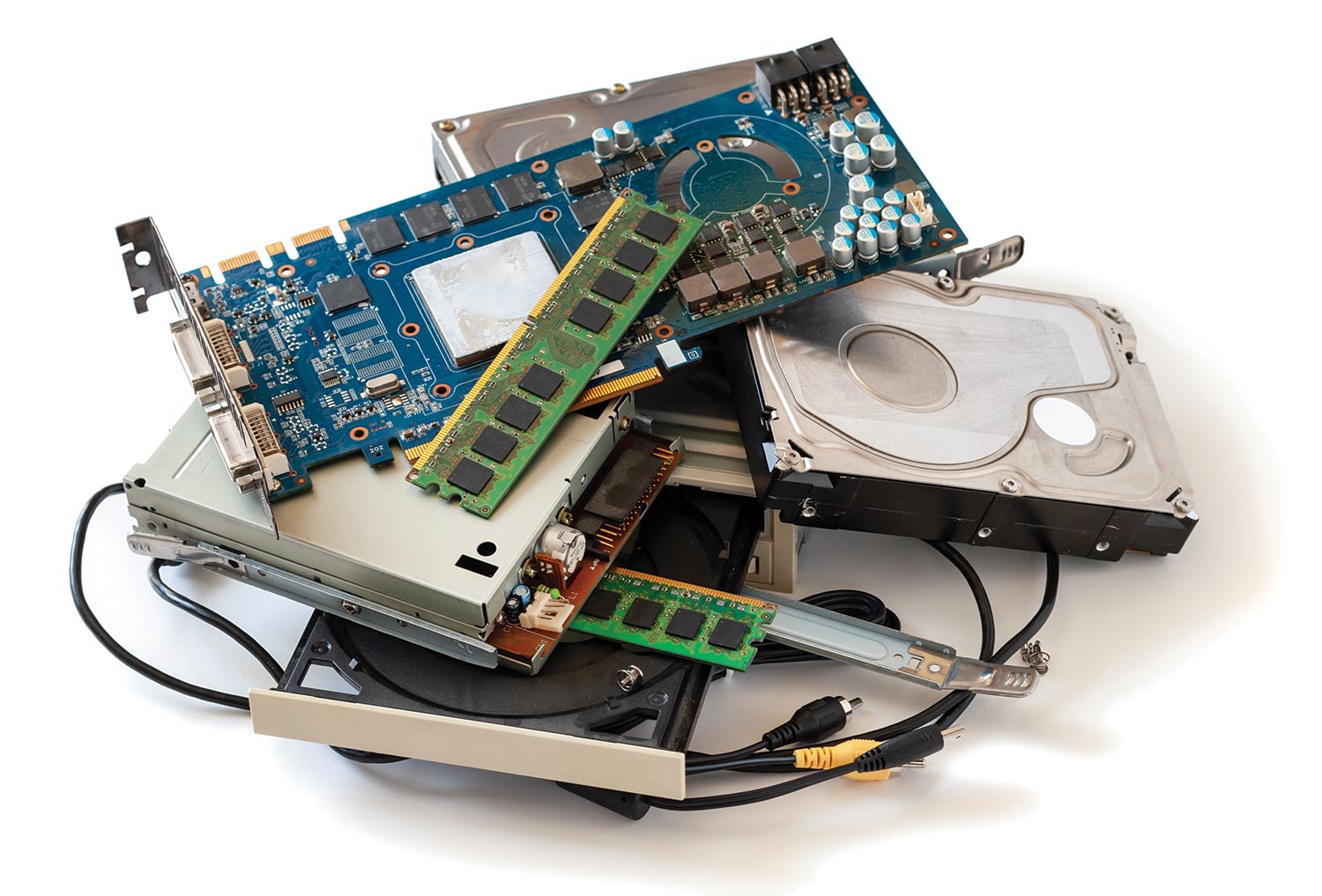
he community wants a recycling program,” says Matt Pearson, recycling manager for the Fairbanks North Star Borough (FNSB). “There has been a long-time push from community members for a centralized location where they could bring materials and electronics.”
Pearson says people have many reasons for recycling, from stewardship of resources to reversing climate change. For the FNSB, the reason is more quantifiable. Each borough resident produces around 5.8 pounds of trash per person per day, above the national average of 4.4 pounds. Without recycling, every waste product ends up in the FNSB landfill on Sanduri Street in southwest Fairbanks, decreasing the lifespan of the 250-acre facility. As it stands, the landfill is designed to last until 2070. Once it’s filled, the borough will need additional acreage for a new dump site.

SUSTAINABLE SOLUTIONS
rom top-notch burger joints to upscale fare, fresh seafood to fusion cuisine, Alaskans have no shortage of fantastic dining options—even outside of cities and larger towns. From roadside diners to intimate taverns and small cafés nestled in the woods, these small, locally owned restaurants along Alaska’s road system provide a dining experience so big, they are a destination unto themselves.
The
window
into
what’s
possible.
We’ll meet you where you are to help you see where you can go. CU1 is your window into what’s next.
enstarnaturalgas.com
snc.org
 482,360 barrels
482,360 barrels 7.2% change from previous month
7.2% change from previous monthSource: Alaska Department of Natural Resources
 $108.77 per barrel
$108.77 per barrel -4.5% change from previous month
-4.5% change from previous monthSource: Alaska Department of Natural Resources
 362,900 labor force
362,900 labor force 4.6% unemployment
4.6% unemploymentSource: US Bureau of Labor Statistics

 The US Bureau of Land Management (BLM) named Steven Cohn as the new Director of the Alaska State Office in Anchorage, responsible for managing 70 million surface acres and 220 million acres of federal subsurface mineral estate. Cohn’s career in federal service began with BLM more than two decades ago. He is returning to BLM from The Nature Conservancy, where he was the Alaska state director since 2018. Cohn holds a bachelor’s degree in government from Harvard University and advanced degrees from the University of California at Berkeley Rausser College of Natural Resources.
The US Bureau of Land Management (BLM) named Steven Cohn as the new Director of the Alaska State Office in Anchorage, responsible for managing 70 million surface acres and 220 million acres of federal subsurface mineral estate. Cohn’s career in federal service began with BLM more than two decades ago. He is returning to BLM from The Nature Conservancy, where he was the Alaska state director since 2018. Cohn holds a bachelor’s degree in government from Harvard University and advanced degrees from the University of California at Berkeley Rausser College of Natural Resources.
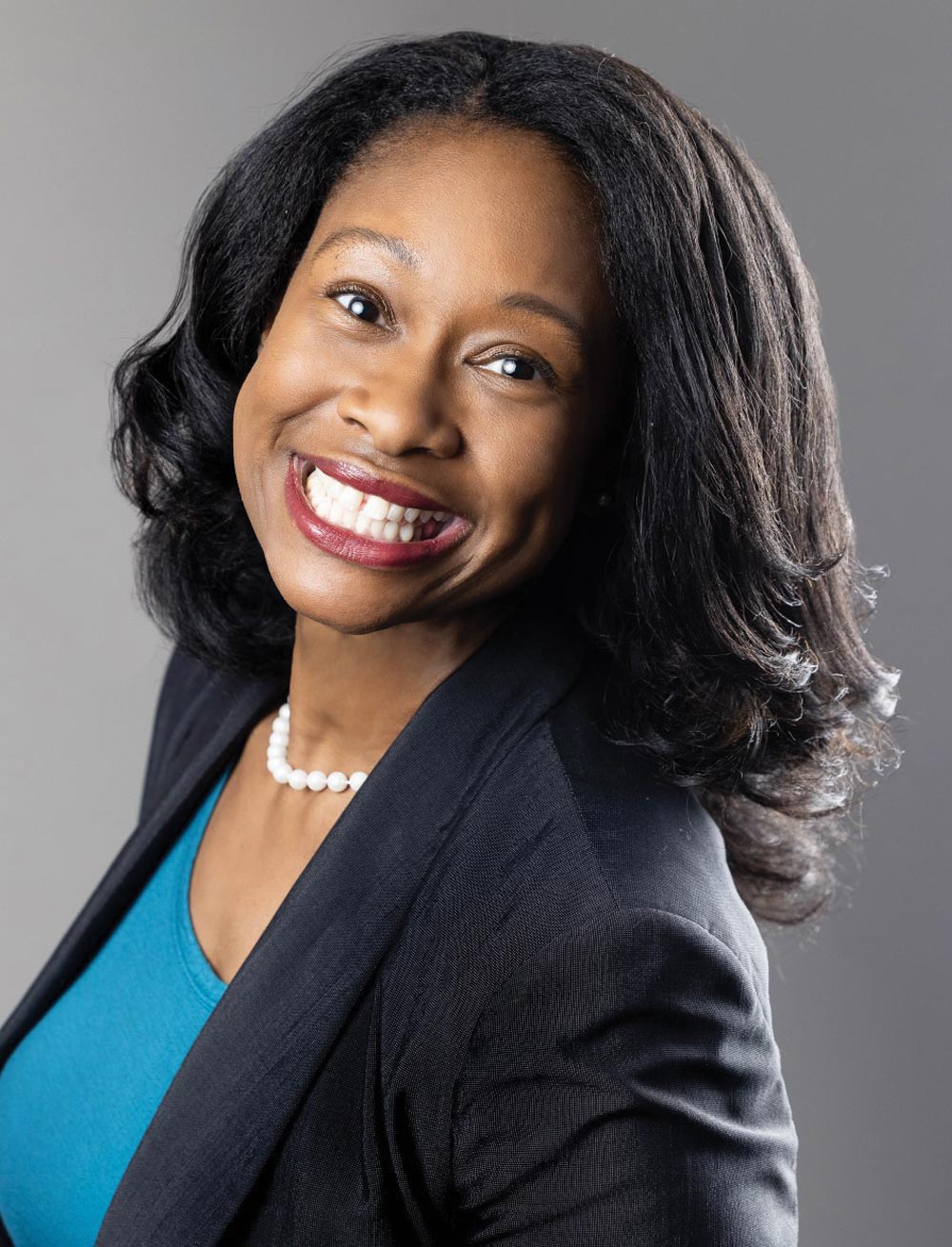
 Brandi Burchett has been selected as the new CEO of Mat-Su Senior Services, the largest nonprofit senior campus in the Matanuska-Susitna Borough. Burchett moved from North Carolina to Wasilla in 2019, leaving the role of vice president of behavioral health services at a federally qualified health center. Burchett earned a master’s degree in counseling from Webster University. This year, Burchett is completing an MBA from the University of Mount Olive in North Carolina.
Brandi Burchett has been selected as the new CEO of Mat-Su Senior Services, the largest nonprofit senior campus in the Matanuska-Susitna Borough. Burchett moved from North Carolina to Wasilla in 2019, leaving the role of vice president of behavioral health services at a federally qualified health center. Burchett earned a master’s degree in counseling from Webster University. This year, Burchett is completing an MBA from the University of Mount Olive in North Carolina.Alaska Trends
ollege sports are big business. The heftiest public employee salary in forty states goes to a college football coach. In its annual analysis, USA Today found the fifty highest paid state employees nationwide in 2021 were coaches of college football or basketball, all making seven figures. Looking at the top three in each state, more than half of the 150 coach football.
Alaska is unusual, not having any college football programs, so a different public employee drew the state’s top paycheck: $371,475 for the executive director of the Alaska Permanent Fund Corporation (abruptly dismissed last December, which some critics compared to firing a football coach during a winning season–but that’s a whole other story). An investment officer with the Permanent Fund was #3, and in between was a state prison psychiatrist at #2, which tracks with other states. In most places where football coaches aren’t in the top spot, the biggest public paycheck goes to an MD, either in a public health agency or medical school. Other than Alaska, the only exceptions are Rhode Island, where the state university president is paid the most, and Delaware, where the biggest paycheck goes to… the veterinarian for the Thoroughbred Racing Commission. Sports!
At a Glance
I review books for the University of Alaska and other academic presses, so… I can’t tell you.
What charity or cause are you passionate about?
I really support traditional Native games. It does such great things for our Native youth and others.
What’s the first thing you do when you get home after a long day at work?
[She laughs] First thing I do is run and cook a pot of rice. Rice goes with everything.
What vacation spot is on your bucket list?
Rome.
If you could domesticate a wild animal, what animal would it be?
[She laughs] Probably a mountain goat. Not only have they great horns but they also have great wool.

At a Glance
I review books for the University of Alaska and other academic presses, so… I can’t tell you.
What charity or cause are you passionate about?
I really support traditional Native games. It does such great things for our Native youth and others.
What’s the first thing you do when you get home after a long day at work?
[She laughs] First thing I do is run and cook a pot of rice. Rice goes with everything.
What vacation spot is on your bucket list?
Rome.
If you could domesticate a wild animal, what animal would it be?
[She laughs] Probably a mountain goat. Not only have they great horns but they also have great wool.
Off the Cuff
osita Worl’s Tlingit name, Kaaháni, means “woman who stands in the place of a man.” During her life, Worl has made the place where she stands her own.
As an enthusiast for cultural survival with an eye toward changing institutions, Worl studied anthropology at Alaska Methodist University (now Alaska Pacific University) and then earned her master’s degree and doctorate from Harvard. She now leads Sealaska Heritage Institute, a nonprofit arm of the regional Native corporation for Southeast, preserving and promoting the traditions of the Tlingit, Haida, and Tsimshian people.


907.659.2000
907.456.2000
907.474.2000
907.895.9898
907.522.6466
907.335.5466
907.659.2000
Fairbanks
907.456.2000
The Rental Zone
907.474.2000
Delta Junction
907.895.9898
Anchorage
907.522.6466
Kenai
907.335.5466
the Seafood Industry!








